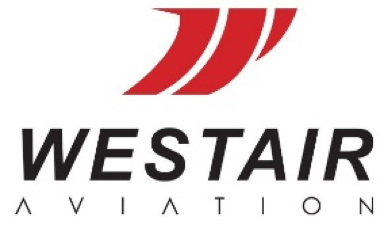Title Page
-
Document No:
-
Audit Title:
-
Client / Site
-
Conducted on
-
Prepared by
-
Location
-
Personnel
1.0 Records
-
1.1 Are the vendor personnel properly trained and are training records maintained on file and available for review?<br>
-
1.2 Does the vendor's file reflect the current designated trainer?<br>
-
1.3 Are all required checks being accomplished on re-fuelers?<br>
-
1.4 Are all filter elements replaced in accordance with acceptable standards?
-
1.5 Are meter calibration records current for storage facility and re-fuelers?
-
1.6 Are Millipore records current for storage facility and re-fuelers?
-
1.7 Are required tank inspection and cleaning records current?
-
1.8 Does the vendor have a procedure for notifying Westair Aviation when new, additional, replacement or modified equipment is in placed?
-
1.9 Have any waivers been issued in the last 12 months?
-
1.10 Does the vendor records indicate when equipment is out of service?
-
1.11 When the equipment is returned to service, are proper checks completed?
-
1.12 Are hose certification current?
-
1.13 Is the master pressure gauge calibration current?
2.0 Storage Facilities
-
2.1 Is the general appearance of storage facilities clean and neat?
-
2.2 Is the area free of evidence of fuel leaks?
-
2.3 Perform white bucket test. Are the results acceptable?
-
2.4 Perform the white bucket test on the filter for the jet fuel vessel sump drains. Are the results acceptable?
-
2.5 Are all valves and switches clearly marked and kept free of obstructions?
-
2.6 Are No Smoking, Flammable, Emergency Shutoff and product signs prominently displayed?
-
2.7 Are hoses, swivels and nozzles in good operational condition?
-
2.8 Are grounding reels, cables and clamps in place and in good, operational condition?
-
2.9 Are pressure gauges checked and replaced if defective?
-
3.0 Is all fueling equipment properly identified and are the required placards, instructions, signs etc. in place and legible?
3.0 Fuel Truck
-
3.1 Is the truck in a good condition?
-
3.2 Is the truck free of any evidence of fuel leaks?
-
3.3 Are the windows free from cracks and crazing?
-
3.4 Are hoses, swivels and nozzles in place and in good operational condition?
-
3.5 Are grounding reels, cables and clamps in place and in good operational condition?
-
3.6 Are hose and dust covers installed?
-
3.7 Are the required fire extinguishers present, inspection tags current, seals in place and properly charged?
-
3.8 Check for evidence of blocking in the dead man control system?
-
3.9 Verify that the safety interlock system works.
-
3.10 Verify the upper limit of the pressure control system.
-
3.11 Check the fuelling pressure gauge.
-
3.12 Was the filter changed within the last 12 months?
-
Enter the Date of change.
-
3.13 Check the emergency shut-off system for proper identification and test operation.
-
3.14 Check the manual shut-off system.
-
3.15 Check the nozzle screens.
-
3.16 Verify the calibrated product meter seal is intact.
-
3.17 Check for the following signs and placards:<br><br>Product identification on each side and rear of the truck.<br>Flammable on each side and rear.<br>No Smoking on both sides and in the cabin.<br>Emergency Fuel Shut-off by each shut-off control<br>External signs for enclosed fire extinguishers.<br>Placard for identifying nozzle pressure<br>Placard identifying filter DPI<br>Placard identifying filter tank drains<br>Placard showing last date filter was changed or single element test was performed.<br>Placards identifying location of brake interlock override switch and correct type of break away wire.<br>Confined space entry placards at entry points into storage man-ways.<br>
-
3.18 Do filter/seperators or fuel monitors meet current API specifications and have all required equipment?
-
3.19 Perform white bucket test on each tank compartment. Are the results acceptable?
-
Number of sumps taken to achieve acceptable sample?
-
3.20 Perform white bucket test on filter vessel sump. Are the results acceptable?
4.0 Into Airplane Fuelling
-
Airplane Identification:
-
Flight Number:
-
Fueler Name:
-
Fueling vehicle number
-
Fueling vehicle type
-
Prior to Fueling:
-
4.1 Did the truck approach the aircraft slowly and with caution?
-
4.2 Are all engines outside of a 10-foot radius of the wing vents?
-
4.3 Was the truck chocked after it was parked next to the aircraft?
-
4.4 Was the bonding of the fuel vehicle accomplished in the proper sequence?
-
4.5 Have the fueling vehicle daily checks been completed and documented?
-
During Fueling
-
4.6 Is the dead man switch being continuously held by the fueling operator?
-
4.7 Is the dead man switch being operated properly?
-
4.8 Is fueling being accomplished automatically only?
-
4.9 Is the fueler observing all gauges, meters and hose connections during the fueling process?
-
4.10 Is the seal on the delivery meter calibrator intact?
-
4.11 Visual Check - Is the emergency shut-off valve on the vehicle visible and unobstructed?
-
4.12 Is the nozzle pressure at a steady flow of less than 51 psi or 3.52 bar?
-
Enter the nozzle pressure observed during fueling.
-
4.13 Is the differential pressure within limits?
-
After fueling
-
4.14 Is the interlock operational and functioning properly? (If fuel cart, check N/A)
-
4.15 Duel cart only - Are the brakes working properly and is the fuel cart properly chocked?
-
4.16 Was the aircraft fuel cap properly installed?
-
Signature Of Safety Inspector
-
Signature of Fuel Supplier Representative










